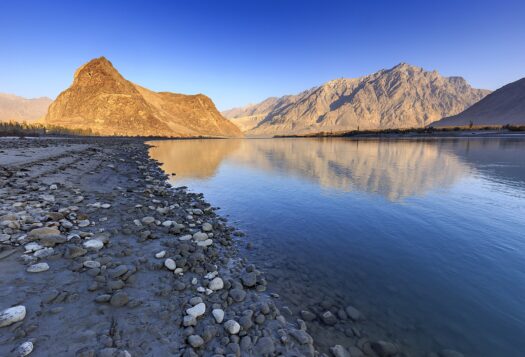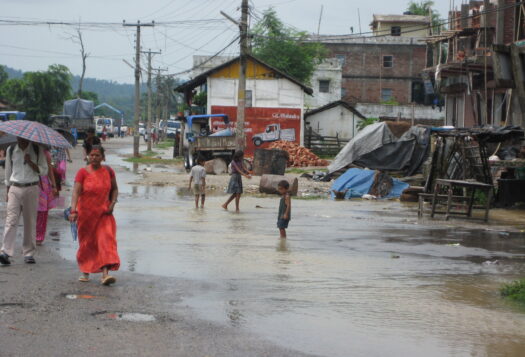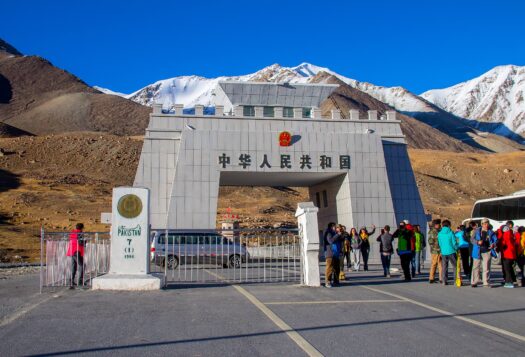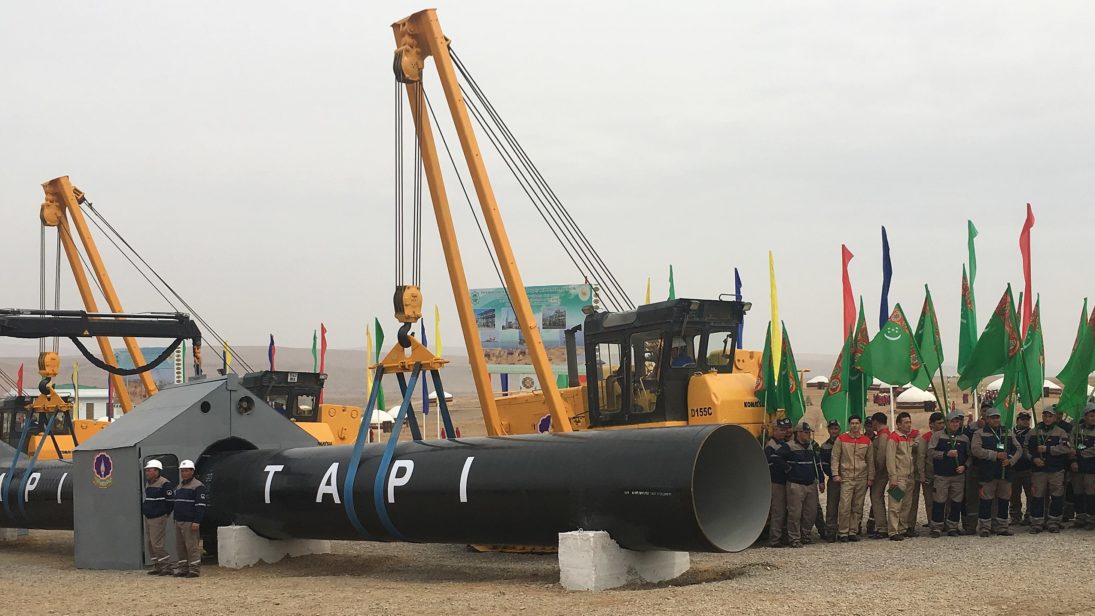
With the U.S. departure and Taliban advances across the country, the future of Afghanistan’s political stability is increasingly in question. Foreign forces are expediting their withdrawal—at times doing so unannounced and without the awareness of the Afghan government or forces. In the meantime, the Taliban have been increasing their control over the region by seizing district after district, and overrunning bases where demoralized and fatigued forces have either surrendered or fled.
Despite the growing concerns over Afghanistan’s stability and political future, the country remains a strategic location and link for many cross-border connectivity initiatives. As Afghanistan President Ashraf Ghani stated in a January 2021 speech: “Afghanistan’s location as a roundabout that links Central Asia with South, East and West Asia as well as implementation of significant economic and infrastructural projects…proves that our vision of connectivity is not an improbable dream but an undeniable reality.” Among the most notable of these ambitious projects is the Turkmenistan-Afghanistan-Pakistan-India (TAPI) pipeline project. Just last month, Afghanistan’s Foreign Minister Mohammed Haneef Atmar met with Turkmenistan’s Foreign Minister Rashid Meredow in Herat to discuss several connectivity projects including the pipeline, which will reportedly be inaugurated in Afghanistan in August 2021.
Although, the TAPI pipeline will be a key economic project that is promised to be mutually beneficial to all parties involved, geopolitics, bureaucratic and economic obstacles, and the security situation within the region have delayed the project on numerous occasions within the last three decades. Today, not much has changed, the project is still being delayed by changing geopolitical dynamics and the rising insecurity and increasing violence within Afghanistan.
A Turbulent History
The TAPI pipeline was first proposed over 30 years ago in a 1995 Memorandum of Understanding between Turkmenistan and Pakistan for a pipeline that cut across Afghanistan. At that time, the Taliban were in power in Afghanistan and part of the pipeline negotiations. However, construction was repeatedly delayed due to political instability in the country, first in 1998 after a U.S.-based corporation supporting the project withdrew following U.S. tensions with the Taliban with the al Qaeda bombings of its embassies in Kenya and Tanzania. After the 2001 U.S. invasion of Afghanistan, construction was once again delayed as a result of the political instability that spread through the country. Although leaders from Turkmenistan, Pakistan, and Afghanistan (then under the Afghan government) signed agreements to cooperate on the project in 2002, and later bringing in India in 2010, surveying for the project did not begin until 2018 (despite an anticipated completion in 2017).
Today, not much has changed, the project is still being delayed by the changing geopolitical relations of the parties involved and the rising insecurity and increasing violence within Afghanistan.
According to the Asian Development Bank, a project shareholder, the TAPI pipeline will span over 1600 kilometers from the Turkmenistan-Afghanistan border to the Pakistan-India border. When the pipeline is at its full capacity it will transport 33 billion cubic meters (bcm) of natural gas each year from Turkmenistan to Afghanistan, Pakistan, and India. The distribution would provide Afghanistan access to five percent and 47.5 percent to Pakistan and another 47.5 percent to India for thirty years. There have been competing figures over how much Afghanistan may receive in transit fees, with reports ranging from USD $400 million by Afghan news agencies to claims of receiving USD $1 billion from the Turkmen foreign minister, Rashid Meredov. The starkly different reports that have been shared suggest that these estimates are just that – estimates – rather than a calculated fixed process that Afghanistan can rely on.
The state company of Turkemenistan, Turkmengaz, is the main contributor to the project, responsible for financing USD $8.5 billion of the $10 billion costs as well as managing the TAPI pipeline. This is the company’s first time managing a project with foreign countries and has found it difficult to get investors. Afghanistan, Pakistan, and India have only committed to five percent of the project cost (around USD $500 million), which could indicate the riskiness of the project or their lack of support. Thus, influencing potential investors on the viability of the project if the parties involved are not investing more in a project that still requires additional funding. Furthermore, as a country known for its international isolation and authoritarian control over the media, questions have risen about proof of the pipelines construction and veracity of information from the Turkmenistan’s side on the pipeline’s completion.
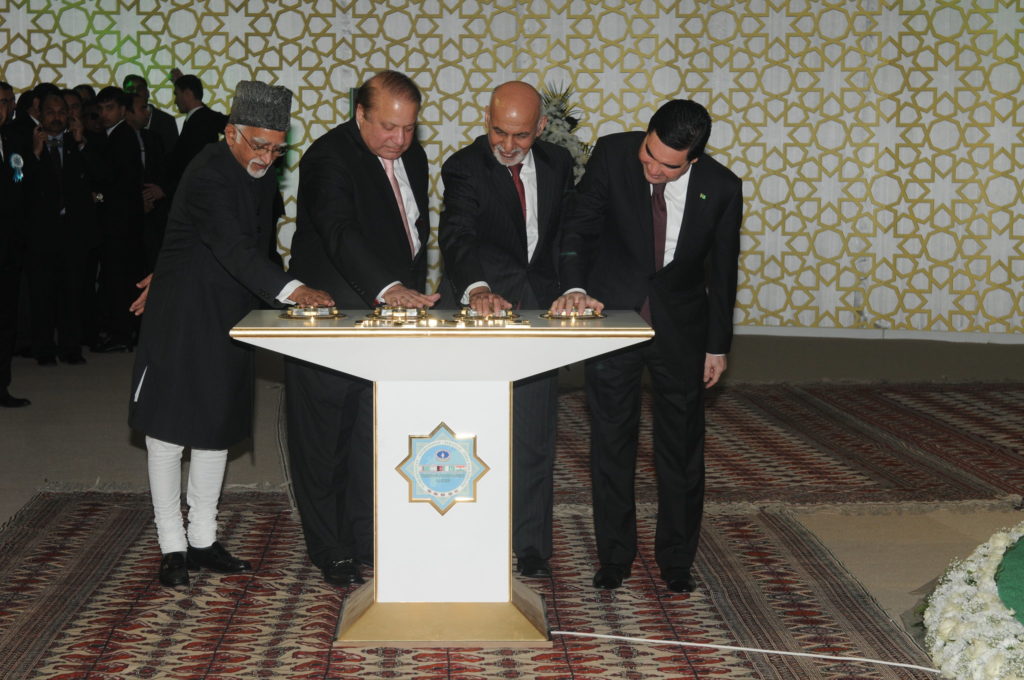
TAPI Pipeline: State Incentives and Geopolitics
Since its independence in 1991, Turkmenistan’s foreign policy has been based on “positive neutrality”—a policy of cooperation and actively working with different parties without taking a side—and exporting natural gas to other countries has been key to sustaining the country’s economy and survival of the government. However, these exports have typically been highly concentrated in one export destination – first the Soviet Union and Russia, and later China – making the economy dependent and vulnerable to the interests of Turkmenistan’s key export partners. Today, Turkmenistan has the world’s fourth-largest gas reserve and sells most of its product to China. In 2019, approximately 30 bcm (or around 90 percent of Turkmenistan’s natural gas exports) were sent to China via the Central Asia-China pipeline network.
For Turkmenistan, the TAPI pipeline is a critical economic project. The delay in building the pipeline has worsened Turkmenistan’s already dire economic situation – primarily due to its inability to sell natural gas and drops in oil prices. Turkmenistan needs a diversified export route to give them a strategic advantage in capitalizing on its resources. The risks of overreliance on one partner were underscored in 2009 following the explosion in a portion of a gas pipeline from Turkmenistan to Russia, which led to tensions between the two countries and significant decrease in exports to Russia’ main energy cooperation, Gazprom. Turkmenistan is aiming to develop its national oil and gas industry’s annual production by 250 bcm and export over 70 percent of it. It is estimated that over 1.5 billion people will benefit from the TAPI pipeline in the countries of Afghanistan, Pakistan, and India through the long-term energy security.
Both set to receive a substantial portion of the natural gas from the pipeline if completed, Pakistan and India have continued to express their support of the TAPI project, with leaders each country meeting in Afghanistan to inaugurate the start of the project in Herat in 2018. However, it is unclear how confident each state is in the project’s eventual completion and both Pakistan and India have looked for ways to diversify exports. Pakistan, recently made a deal with Russia to build a pipeline that will increase the liquefied natural gas (LNG) importing capacity of the state. As a result, Pakistan is claiming that it imports LNG at cheaper rates compared to the price promised in the TAPI deal. Pakistan and Turkmenistan are renegotiating a lower gas price to maintain Pakistan’s interest in the project. On the other hand, India has diverse sources from which it obtains its oil and gas supply, therefore, India is maintaining a “wait and watch” policy as they want to see how the political climate in Afghanistan will be post complete US withdrawal.
The U.S. government’s interest does lie in the successful completion of the project as it would lessen Russia and China’s influence in the region.
If successful, TAPI would also bypass other major powers in the region, China and Russia, as well as provides an opportunity to potentially stabilize the relationships and the security situation within Central Asia. Russian president Vladimir Putin has stated that Russia will support Afghanistan through international projects like TAPI as part of its support for the Afghan peace process. The TAPI pipeline would also bring Central Asian energy to the market and lower the global reliance on the oil from the Middle East. The United States has supported the TAPI pipeline for the past three decades but is not directly involved in its construction, is not contributing financially, nor is it a party to the deal. However, the U.S. government’s interest does lie in the successful completion of the project as it would lessen Russia and China’s influence in the region. A number of projects that are funded through China’s Belt and Road Initiative have led many energy rich countries into debt due to the countries either heavily or exclusively relying on China as the only importer of their resource. However, as NATO and U.S. forces continue their withdrawal from Afghanistan, Central Asian countries will have to seek support on major projects from Russia and China who are more than willing to “advance their status and role in the region.”
As the main transit point of the pipeline, however, the success of TAPI will depend on the projects ability to traverse Afghanistan. The Taliban has repeatedly pledged their support for the TAPI pipeline and assured that they would welcome the project. However, questions remain over whether the project’s security and the geopolitical relationship in Central Asia will be severely impacted by the stance taken by the Taliban. While the TAPI pipeline is seen as a strategic opportunity as it acts as a bridge between Central and South Asian energy cooperation, many states are waiting to see whether the Taliban will stick to their word of supporting the economic projects in the country.
Editor’s Note: This article is part of a four-part South Asian Voices series, “The Geopolitics & Connectivity in South Asia.” In this series, contributors explore four core infrastructure projects: Gwadar and Chabahar port, the Turkmenistan-Afghanistan-Pakistan-India pipeline, and the International North-South Transport Corridor. Read the full series here.
***
Image 1: via Wikimedia Commons
Image 2: India Ministry of External Affairs via Flickr
